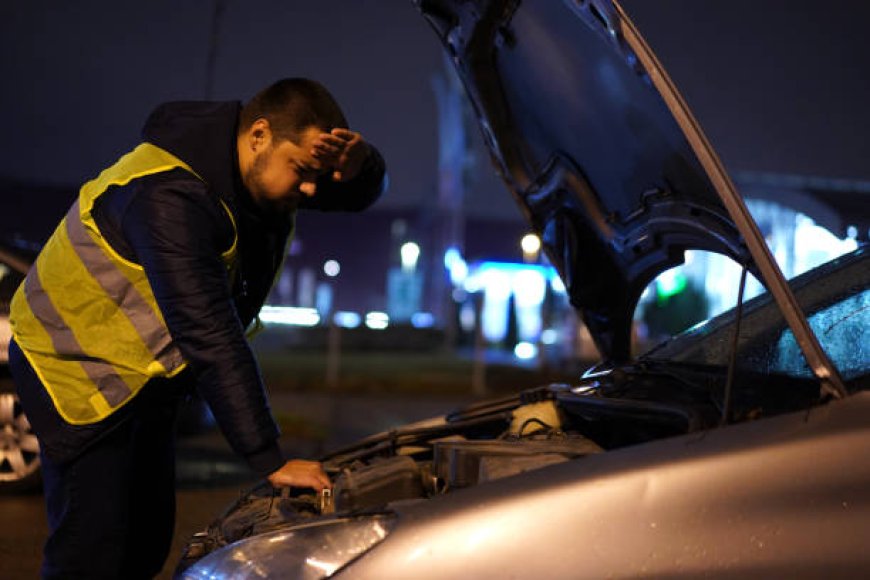What UK Drivers Should Do If Their Car Breaks Down at Night

Breaking down on the road is never fun, but it can feel even scarier when it happens in the dark. If your car stops working at night, it’s important to stay calm and follow some basic steps to stay safe. Many UK drivers are unsure of what to do first, especially when visibility is low and help might take longer to arrive.
This guide will walk you through everything you need to know, from safety steps to how to get assistance without using complicated terms.
Step 1: Stay Calm and Move to Safety
The very first thing to do is to stay calm. If you can, try to move your car to a safe spot on the side of the road. Ideally, pull over onto the hard shoulder or a lay-by. Make sure your wheels are turned away from the road to prevent the car from rolling into traffic.
If you're on a motorway and can’t get off, move your vehicle as far to the left as possible and exit from the passenger side, if it’s safe. Always put your hazard lights on so other drivers can see your vehicle clearly.
Step 2: Make Yourself Visible
Visibility at night is low, so it’s important to let others know you're there. Put on a reflective jacket if you have one. Use your warning triangle, placing it at least 45 metres behind your car (if you’re not on a motorway). These steps help other drivers spot you and avoid accidents.
Step 3: Call for Help
Once you're safe, use your mobile phone to call for roadside assistance. If you already have car recovery services, contact them right away and give them your exact location. Most companies will ask for landmarks or motorway signs to locate you faster.
If you don’t have a plan, you can still search online for trusted help nearby. For example, if you're in Bedfordshire, a reliable option for car recovery Luton is Autotrek, which offers professional support day or night.
Step 4: Don’t Try to Fix the Problem in the Dark
It might be tempting to open the bonnet and see what’s wrong, but doing this in the dark can be dangerous. Roads are less visible at night, and passing cars may not see you in time. Unless it’s something very basic, like a loose cable you already know how to fix, it’s best to wait for help.
If your issue is something like a dead battery, you may only need a jump start service, which can get your car going again without towing it away.
Step 5: Stay Inside If It’s Safer
If you’re not sure whether to leave the car or stay inside, think about your surroundings. On a motorway or busy A-road, it’s often safer to leave the car and stand behind a barrier. On quieter roads, staying inside with your seatbelt on and doors locked might be safer until help arrives.
Step 6: Use Emergency Apps and Numbers
In the UK, you can call Highways England for help if you’re on a motorway. It's also a good idea to keep apps from your recovery company on your phone so you can track the help and send your location easily.
Step 7: Know Your Options for Getting the Car Home
Once your car is inspected, you’ll know whether it can be fixed on the spot or needs to be taken away. In some cases, you may need to use car transport services to move it to a garage. This is different from towing it’s more secure and often better for long distances.
In urgent cases, car towing might be needed. Make sure to confirm whether the recovery team is towing your car to a nearby mechanic or your home.
Step 8: Prepare for Next Time
After the incident, take time to review what went wrong. Did your car overheat? Did a battery fail? Many car recovery situations can be avoided with regular service checks.
Keeping your car well maintained will not only prevent breakdowns but also save you money. Simple habits like checking oil levels, tyre pressure, and lights can reduce risk.
You should also keep a basic emergency kit in your car. Include things like:
-
Torch
-
First aid kit
-
Phone charger
-
Water bottle
-
Blanket
-
Reflective jacket
Common Mistakes to Avoid
-
Standing near moving traffic: Always move behind barriers when possible.
-
Not using hazard lights: This is crucial for visibility at night.
-
Trying to push the car alone: It’s unsafe and often unnecessary.
-
Skipping regular checks: Basic maintenance can prevent major breakdowns.
-
Not knowing your recovery number: Save it in your phone and write it down in your car.
Final Thoughts
Breaking down at night can be frightening, but knowing what to do makes all the difference. Focus on staying safe, calling for help, and staying visible. Whether you need a jump start service or car transport services, the goal is to get you back on the road or home safely and without stress.
What's Your Reaction?
 Like
0
Like
0
 Dislike
0
Dislike
0
 Love
0
Love
0
 Funny
0
Funny
0
 Angry
0
Angry
0
 Sad
0
Sad
0
 Wow
0
Wow
0




































